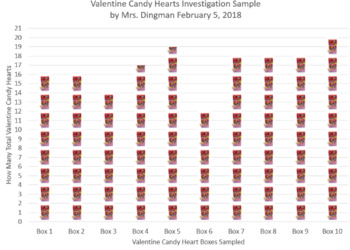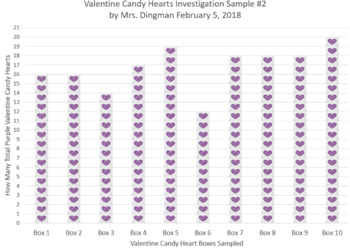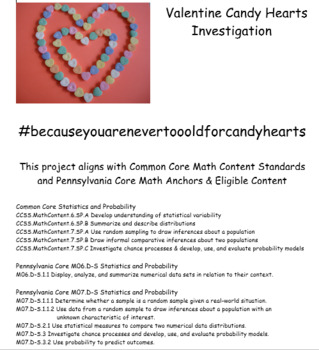Excel Graphing Valentine Candy Hearts Investigation
- PDF
- Excel Spreadsheets
Description
#welovecandyhearts
This integrated Math/ Science/ Technology project is a great way to make statistics and probability real, relevant, fun, and delicious!
Students will create bar graphs using Excel to display Valentine candy hearts data, as students consider packaging and production of small Valentine candy heart individual boxes.
Project file includes sample bulletin board display poster, project directions in individual student checklist form, and rubric to grade the finished graph.
Project file student directions have been updated for Excel 2016.
Completed graphs could be inserted into a Scientific Method Mini-Trifold Board, using a Word doc I developed. This is available as a FREE resource in my teacherspayteachers shop. Student samples of this may be viewed here:
http://www.mrsdingman.com/Vday_Mini_Tri-Fold_Julia.pdf
http://www.mrsdingman.com/Vday_Mini_Trifold_Natalie.pdf
This Excel graphing project was completed in my math classroom as a "center" activity. Small groups of students worked on our 5 classroom desktop computers, had rotating 10-15 minute sessions, allowing all students to work at their own pace. During a 9 week marking period, we completed one or two graphing projects, using this center-based approach.
Student samples of this classroom-tested project may be viewed on my web site here:
http://www.mrsdingman.com/ExcelGraphing.html#anchor_244





